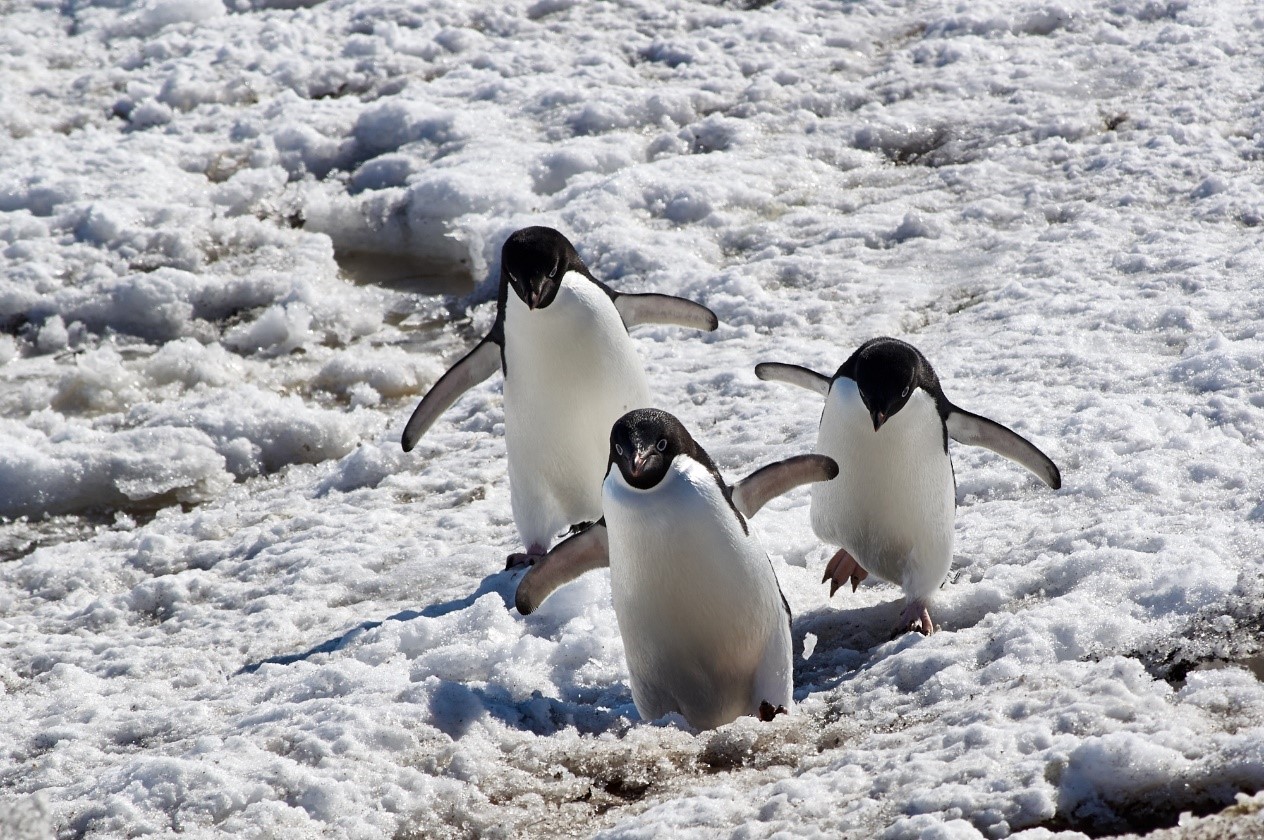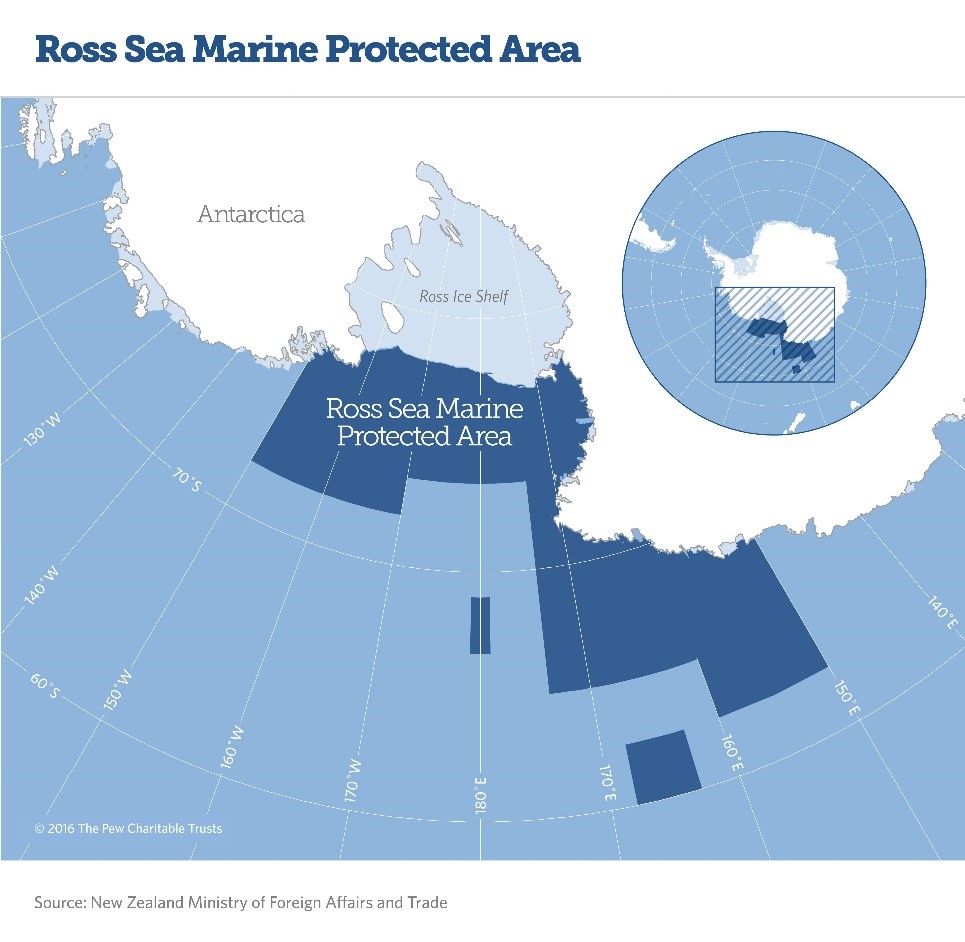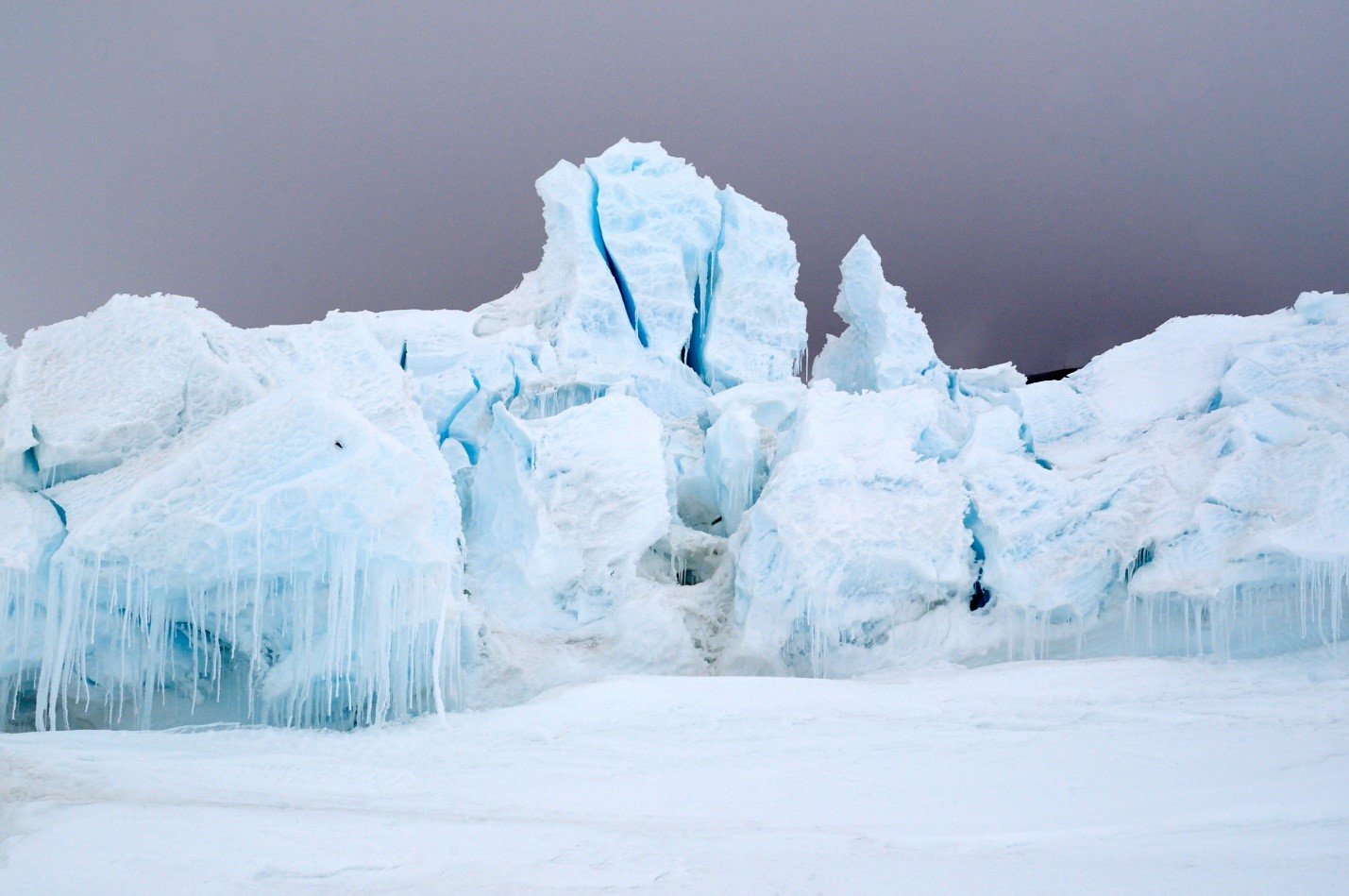By: Adrian Dahood

Adelie penguins coming ashore in the Ross Sea
A VERY BIG thing has just happened. A new, and enormous Marine Protected Area (MPA) was just established. On October 27th 2016 headlines from media outlets across the globe erupted with the unbelievably good news that a sizable MPA had been declared in Antarctica’s Ross Sea. This is only the second Antarctic MPA.

A sampling of world press headlines announcing the Ross Sea MPA.
I do not use the word “unbelievably” lightly. Every October since 2011, there have been headlines about the Ross Sea and MPA efforts there. Until this year, those headlines have largely reflected a lack of diplomatic progress to establish the MPA.
The Ross Sea is the most southern sea in the world. It is not governed by any one nation. Rather, the Ross Sea exists in international waters and is governed collectively by all Nations Party to the Antarctic Treaty and the Conservation of Antarctic Marine Living Resources (CAMLR) Convention. The Commissioners of the CAMLR Convention make decisions by consensus. This is a very powerful way to come to decisions because no action is taken until all Parties agree. Decisions made by consensus tend to be harder to reach, but are long lasting. In order for the Ross Sea Marine Protected Area to be adopted, representatives from 24 nations and the European Union had to support the proposal and give their consent. Collectively these representatives are known as the Commission for the Conservation of Antarctic Marine Living Resources (CCAMLR).
CCAMLR Nations have vastly different ideologies related to conservation. Nations like the United States, the United Kingdom, Australia, and the European Union have historically pushed forcefully for conservation efforts. Nations such as Russia, China, Japan, and Korea have advocated strongly to maintain fishing access. ALL of 24 member Nations and the European Union reached an agreement to set aside 1.55 million km² area of the Ross Sea as an MPA. The Ross Sea MPA is approximately twice the size of Texas and is the largest protected area in the world.

The newly adopted Ross Sea MPA. Map drawn by The Pew Charitable Trusts and made available here (PDF).
The path to reach agreement on the Ross Sea MPA has been long and hard fought. The idea for the MPA came from the scientific community, specifically Dr. David Ainley who has been conducting research on Ross Sea marine ecosystems for decades. In 2002 Dr. Ainley submitted to CCAMLR the first paper describing the conservation significance of the Ross Sea. It is one of the last places on earth where ecosystem have not been significantly altered by human activities. In 2009 the First International Marine Conservation Congress (IMCC) was held right here at George Mason University. Dr. Ainley and interested scientists and conservationist organized a workshop on the Ross Sea to push for development of an MPA proposal. That same year the first, and until now, only Antarctic MPA was designated near the South Orkney Islands. The first Ross Sea MPA Scenario (a type of preliminary proposal) was submitted two years later by the United States Delegation the 2011 CCAMLR Scientific Committee meeting. The United States, and eventual co-proponent New Zealand, have been submitting a revised, or clarified, proposal to CCAMLR every year since. Nations that conduct the most fishing in the Antarctic had the greatest reservations about creating an MPA in the Ross Sea. It took a lot of work convince them of the merits of the Ross Sea MPA and to revise the proposal so that it was acceptable to all Parties. Adoption of the MPA this year recognizes the many years of scientific work, diplomatic compromise, and even educational efforts put in by the small army of people who have been advocating for the Ross Sea MPA. This army includes scientists from academia, government scientists and policy makers, NGO scientists and policy advocates, and even the general public.
We scientists played what may seem to you as unlikely roles in this particular MPA process. I include myself here, because I have been involved, at least peripherally, in the Ross Sea MPA since 2010. The Antarctic Treaty (1959) sets Antarctica aside for peaceful purposes and specifically calls for freedom of scientific investigation and cooperation. The Antarctic Treaty therefore establishes scientists as key stakeholders in Antarctic conservation efforts, and not merely conveyors of impartial information to aid the decision making process.
The Ross Sea research community embraced this role of stakeholder, advocating for their study areas, their study organisms, and their very ability to continue doing research in a pristine area in the face of a small fishery seeking to expand. University researchers spoke to their classes, to their departments, and to their funding agencies to raise awareness and earn more funding. Scientists and policy specialists at NGOs, such as The Pew Charitable Trusts, used their organizations resources to fund more research and push public awareness campaigns. Scientists working for the US Government conducted scientific diplomacy. We went to stake holder meetings (so many meetings!) and did our best to represent United States stake holder views to our agencies and internationally to CCAMLR Delegates. NOAA’s Antarctic Ecosystem Research Division invested significant time and effort into developing proposals for the the Ross Sea MPA, even though the majority of their own scientific investigations do not occur in the Ross Sea region. Scientists employed by NOAA and the NSF worked with NZ scientists and conducted outreach to the broader scientific community, to ensure that the best available science was used to develop and improve each iteration of the MPA proposal. And then, with proposal in hand, they conducted diplomatic missions with representatives from the Department of State, to convince CCAMLR Delegations from around the world to support the proposal for a Ross Sea MPA. There were countless meetings that lasted into the wee hours of the morning, many of which did not end with meaningful compromise or progress. Some countries were easy to bring on board. Others needed multiple meetings outside of the CCAMLR setting and changes in larger geopolitics to bring them on board. I would like to think that the little bit of support work I did, including GIS, endless editing of early stage documents, and some talking points I wrote for Secretary of State Kerry aided the process.

A now protected sea ice pressure ridge in the Ross Sea. These areas are important habitat for the Weddell seals, and other species.
The final Ross Sea MPA design reflects the years of hard work and compromise that went into creating it. The amount of area protected is makes it the largest protected, either terrestrial or marine, in the world. A significant portion of the MPA has been designated as no-take, where no fishing is allowed. Other zones have been designated solely for research fishing or have reduced levels of fishing. These are huge accomplishments for conservationists. However, those successes came at a cost. Fishing nations imposed a 35 year “sunset clause” which requires MPA proponents to re-argue for protecting the region in 35 years. Failure to reach consensus to extend the duration of the MPA at that time would end protection. Additionally, some of the areas most important to foraging animals were excluded from the MPA, because they are of great interest to the fishery. In the best compromises everybody sacrifices. Though the final Ross Sea MPA is not what Dr. Ainley and his group of scientists envisioned when they started fourteen years ago, it a tremendous achievement. It cannot be understated how exciting it is that in this day and age of escalating geopolitics, rival Nations came together, made many compromises, and established long-term protection for the Ross Sea.
The success of the Ross Sea MPA proposal bodes well for the establishment of more Antarctic MPAs. I am now tucking into my Ecopath with Ecosim model of the Antarctic Peninsula region with renewed vigor. My model is designed to aid in the MPA designation process for the Antarctic Peninsula region. After six years of limited progress on Antarctic MPAs, it seems that CCAMLR has finally found some momentum and more MPAs will be designated.

It’s the dawn of a new day for Antarctic MPAs. Will the Antarctic Peninsula region be the next place an MPA is established?